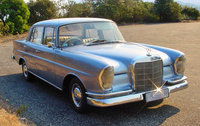Difference between revisions of "Crumple zone"
m |
m |
||
| Line 4: | Line 4: | ||
[[Image:Caraccidentinpleasanton(CROPPED).jpg|thumb|right|200px|Activated rear crumple zone]] | [[Image:Caraccidentinpleasanton(CROPPED).jpg|thumb|right|200px|Activated rear crumple zone]] | ||
| − | The '''crumple zone''' of an [[automobile]] is a structural feature designed to compress during an [[accident]] to absorb [[energy]] from an impact. Typically, crumple zones are located in the front part of the vehicle, in order to absorb the impact of a head-on collision, though they may be found on other parts of the vehicle as well | + | The '''crumple zone''' of a vehicle such as a [[train]] or an [[automobile]] is a structural feature designed to compress during an [[accident]] to absorb [[energy]] from an impact. Typically, crumple zones are located in the front part of the vehicle, in order to absorb the impact of a [[head-on collision]], though they may be found on other parts of the vehicle as well. |
| − | + | The crumple zone concept was used by the [[Mercedes-Benz]] engineer [[Bela Barenyi]] on the 1959 [[Mercedes-Benz Heckflosse|Mercedes-Benz ''"Fintail"'']].[http://motoring.independent.co.uk/features/article340543.ece] | |
| − | + | Crumple zones work by managing the crash energy so that it is absorbed within the frontal section of the vehicle, and by preventing intrusion into or deformation of the passenger cabin. This acts to ensure front seat occupants are properly protected against injury. In simplistic terms, this is done by strengthening the passenger cabin part of the body by using more reinforced beams and increasingly, higher strength steels. | |
| + | |||
| + | A common misconception about crumple zones is that they reduce safety by allowing the vehicle's body to collapse, crushing the occupants. The marked improvement over the past two decades in high speed crash test results proves this is a misconception. Modern vehicles using what are commonly termed 'crumple zones' provide, on average, far superior protection for their occupants in severe tests than older models. | ||
| + | |||
| + | The only other general downside to crumple zones is that repair costs are higher in "fender bender" accidents. | ||
| + | |||
| + | [[Image:Vehicle crash test at the General Motors Vehicle Safety and crash Worthiness Laboratory.jpg|200px|thumb|right|A [[crash test]] illustrates how a crumple zone absorbs energy from a crash.]] | ||
| + | |||
| + | The 2004 [[Pininfarina]] ''Nido'' [[Experimental Safety Vehicle]] locates crumple zones ''inside'' the Survival Cell. Those interior crumple zones decelerate a sled-mounted survival cell [http://cartype.com/page.cfm?id=653&alph=ALL&dec=ALL]. | ||
| + | |||
| + | == See also == | ||
| + | * [[Automobile safety]] | ||
| + | * [[Crash test]] | ||
| + | * [[Copmanthorpe rail crash]] - in which a crumple zone has been attributed to reducing the number of injuries and fatalities. | ||
== External links == | == External links == | ||
| Line 14: | Line 27: | ||
*[http://members.aol.com/cerick5563/physics/crumple.html Crumple Zones in Automobiles] | *[http://members.aol.com/cerick5563/physics/crumple.html Crumple Zones in Automobiles] | ||
*[http://www.visionengineer.com/mech/crumple_zones.shtml Crumple Zones(How Do Crumple Zones Work)] | *[http://www.visionengineer.com/mech/crumple_zones.shtml Crumple Zones(How Do Crumple Zones Work)] | ||
| − | |||
[[Category:Automotive safety technologies]] | [[Category:Automotive safety technologies]] | ||
Revision as of 21:26, 21 June 2007
The crumple zone of a vehicle such as a train or an automobile is a structural feature designed to compress during an accident to absorb energy from an impact. Typically, crumple zones are located in the front part of the vehicle, in order to absorb the impact of a head-on collision, though they may be found on other parts of the vehicle as well.
The crumple zone concept was used by the Mercedes-Benz engineer Bela Barenyi on the 1959 Mercedes-Benz "Fintail".[1]
Crumple zones work by managing the crash energy so that it is absorbed within the frontal section of the vehicle, and by preventing intrusion into or deformation of the passenger cabin. This acts to ensure front seat occupants are properly protected against injury. In simplistic terms, this is done by strengthening the passenger cabin part of the body by using more reinforced beams and increasingly, higher strength steels.
A common misconception about crumple zones is that they reduce safety by allowing the vehicle's body to collapse, crushing the occupants. The marked improvement over the past two decades in high speed crash test results proves this is a misconception. Modern vehicles using what are commonly termed 'crumple zones' provide, on average, far superior protection for their occupants in severe tests than older models.
The only other general downside to crumple zones is that repair costs are higher in "fender bender" accidents.

The 2004 Pininfarina Nido Experimental Safety Vehicle locates crumple zones inside the Survival Cell. Those interior crumple zones decelerate a sled-mounted survival cell [2].
See also
- Automobile safety
- Crash test
- Copmanthorpe rail crash - in which a crumple zone has been attributed to reducing the number of injuries and fatalities.


